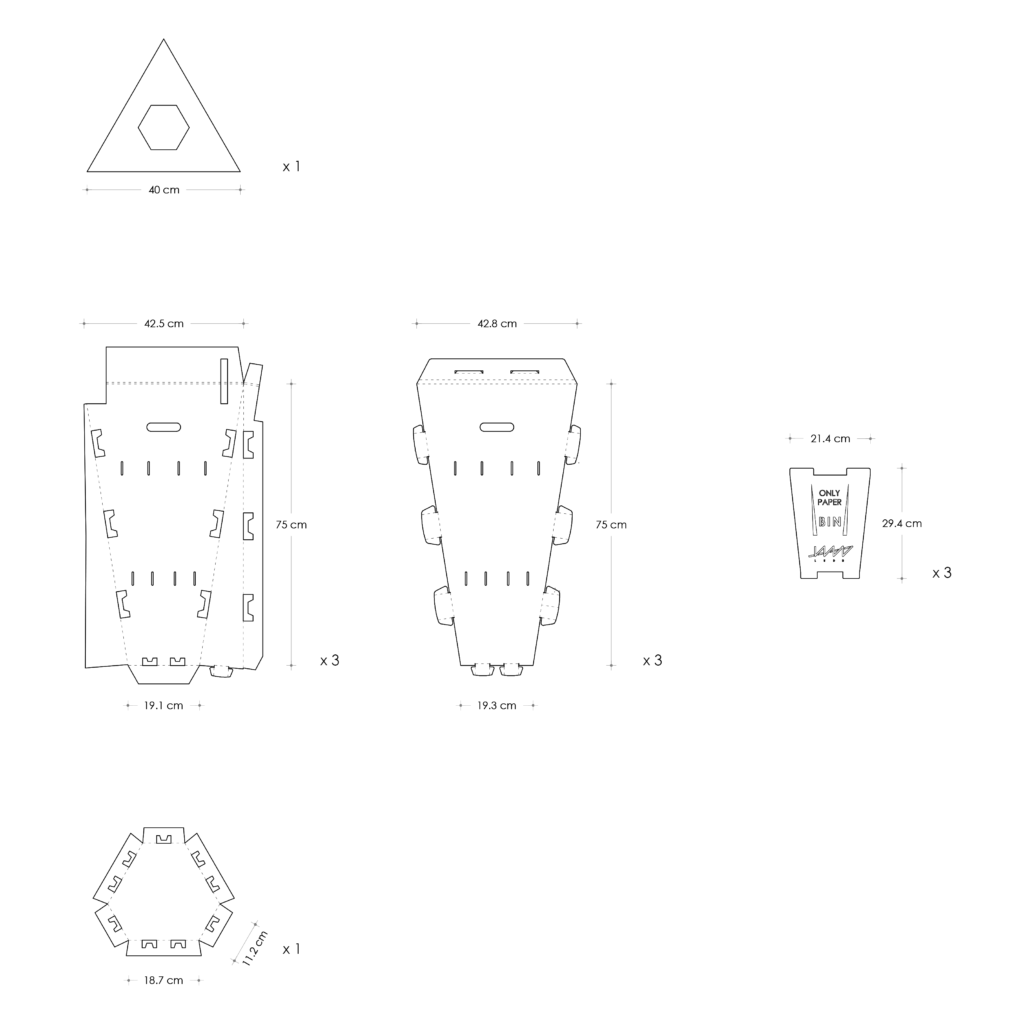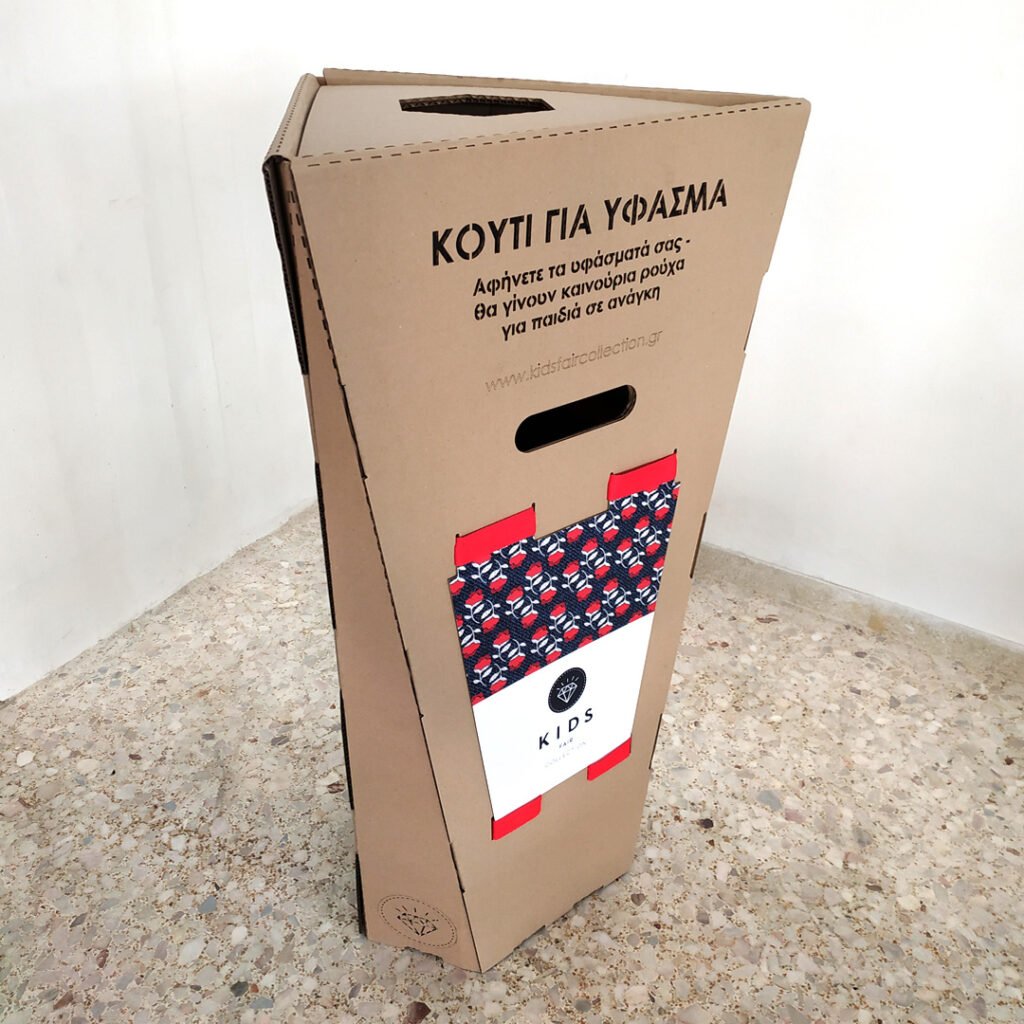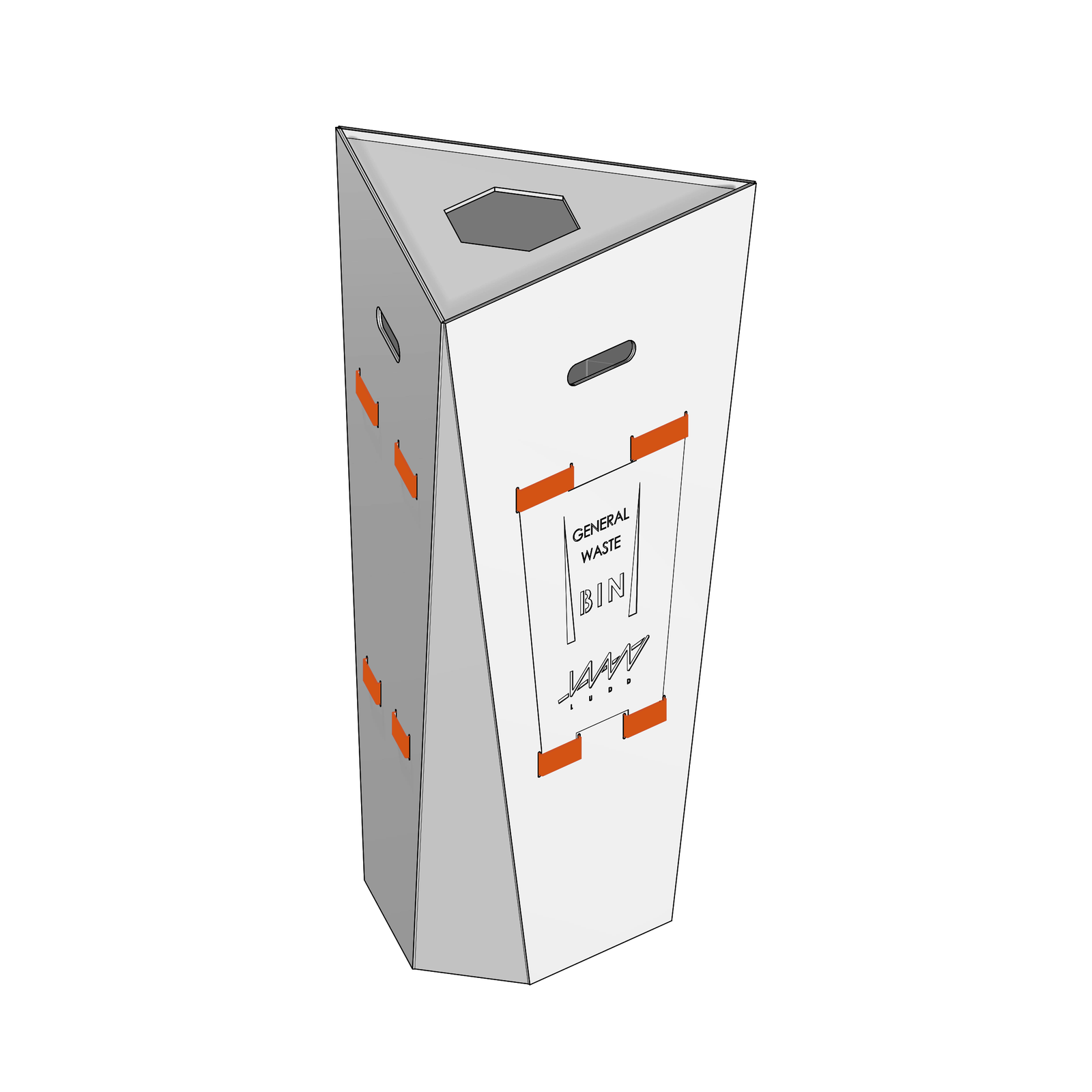The development of the bins was triggered by Birdland’s Promo & Communications initiative "The Second Life of a Poster". A project in collaboration with Birdland, Dock 4share, Rokani and our team. The aim of the project was to reduce the environmental impact caused by the waste of promotional paper poster material, as well as to contribute to the protection of the environment by encouraging paper recycling. The project was piloted with the installation of the custom bins in approximately 20 cultural and entertainment venues.
Our main design objective was to showcase the values of Birdland's project and cultivate a culture of environmental responsibility among the audience. For this reason, we aimed to create an object with a dynamic form, constructed from affordable and sustainable materials, allowing for production and assembly in a small batch number.
Consciously, we chose to use recycled cardboard sheets as the primary fabrication material that embodies the ethos of sustainability and circularity. This choice reduces the project's environmental footprint while visually and authentically emphasising the goals of recycling, presenting a tangible example of redefining everyday objects. Each bin, with a height of 1.10cm, is made from 6 sheets of recycled cardboard measuring 120cm x 70cm, cut with our laser machine.





The object adopts a formal structure reminiscent of the traditional Asian paper folding technique of origami. Its form starts from the base with a hexagonal shape that gradually unfolds conically towards a triangular apex. This gradual transition allows for increased capacity without compromising structural integrity, while the shape change adds an element of transformation, reflecting the essence of recycling as a process of evolution and growth. The triangular apex, as an interaction point with the user, allows for efficient access from various angles and enables radial or linear arrangement of multiple bins, facilitating the separation of different recyclable materials.
Each bin can be easily customised by:
- altering its dimensions,
- applying digital prints or painting on the cardboard surface,
- using the specially designed signage cases located on each of the three large side surfaces,
- modifying the cutting patterns to adapt personalised shapes or letters on the surfaces.
To date, the object has been constructed and used in various occasions and contexts, each time customised to promote the different messages and visual identities of the respective projects it represented. The designs are available under Creative Commons licences (Attribution-NonCommercial-ShareAlike 4.0 International) for free creation and adaptation of the object for personal use, with attribution to the creators.
